The Uyuni Salt Flats are one of the largest salt flats in the world and a highlight during a trip through Bolivia. Seeing these immense white salt flats, combined with the beautiful clear blue sky, is something that you will never forget. El Salar de Uyuni is best explored by a jeep tour, where you drive for hours over the breathtaking salt flats, visit extinct volcanoes and special rock formations, with centuries-old cacti. Over the past fifteen years, I have had the opportunity to visit Bolivia and El Salar de Uyuni almost every year. In this article I will tell you everything you want to know about El Salar de Uyuni, the possibilities to visit these salt flats and useful tips from my years of experience in Bolivia.
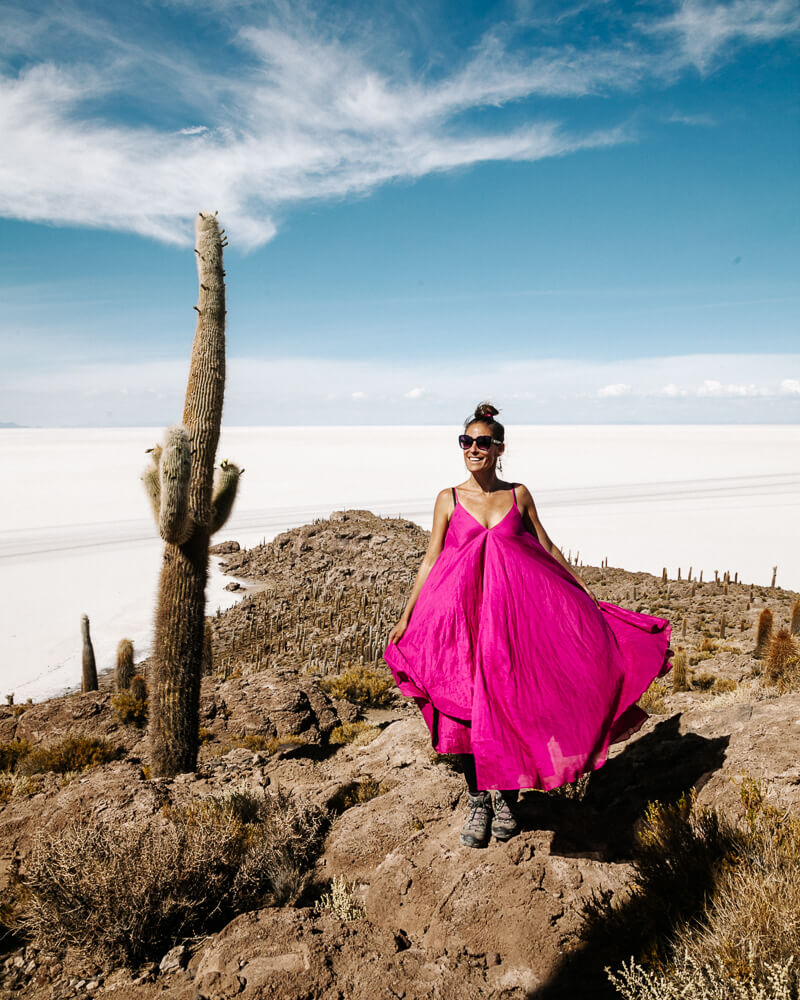
With a size of more than 10.000 km2, El Salar de Uyuni in Bolivia is one of the largest salt flats in the world. The Bolivia salt flats are located at an elevation of 3,656 meters (above sea level) in the south-west of Bolivia and continues to Chile. Some 40,000 years ago this area would have been part of a giant prehistoric lake, Lago Minchin. As the lake dried up over the years, two lakes and a salt flat, El Salar de Uyuni Bolivia, emerged. In some places the salt flat is up to 20 meters thick.
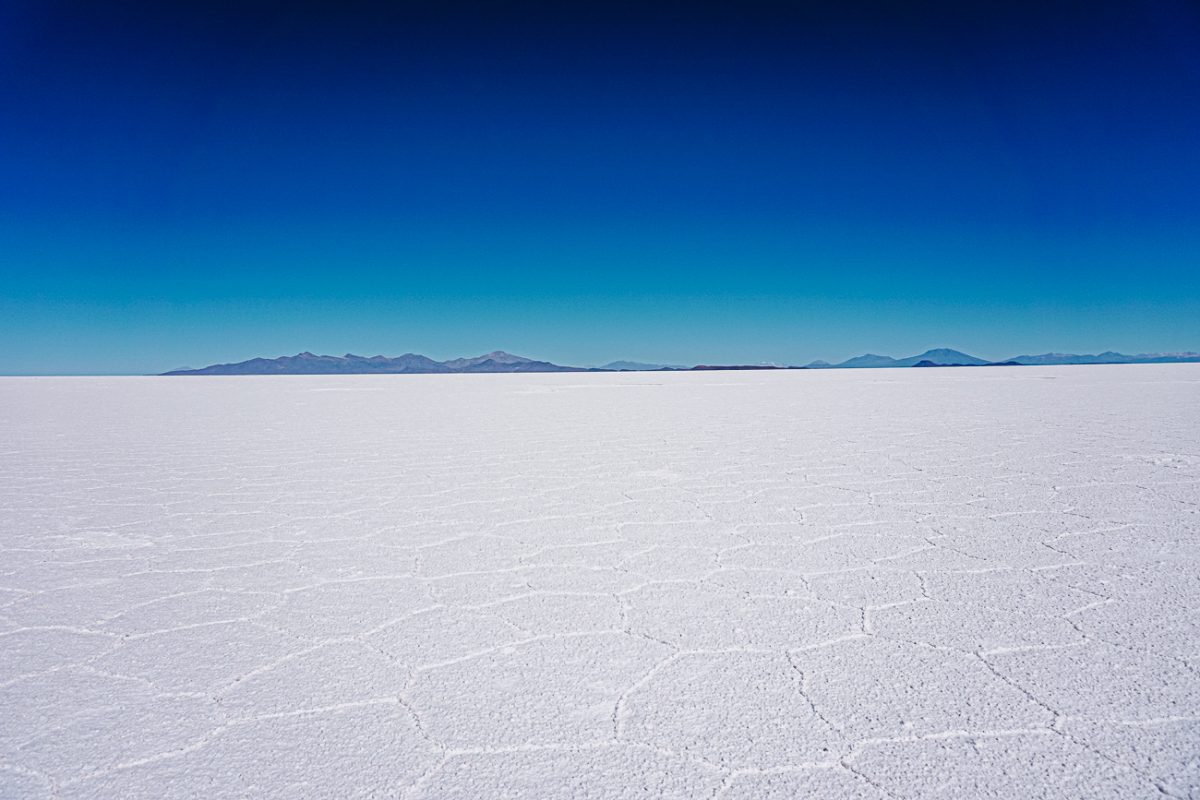
In the rainy season between November and March, the plain is flooded and therefore not everywhere accessible. The Bolivia salt flats are then one big mirror and clouds endlessly reflect on the surface of the water. And as you can imagine, you can take amazing pictures.
In the town of Uyuni in Bolivia, numerous tours to El Salar de Uyuni are offered. These are all jeep tours, because this is the fastest and safest way to travel across the Salar de Uyuni. There are day trips or multi-day tours, where you spend the night in small villages around the salt flats of Bolivia.
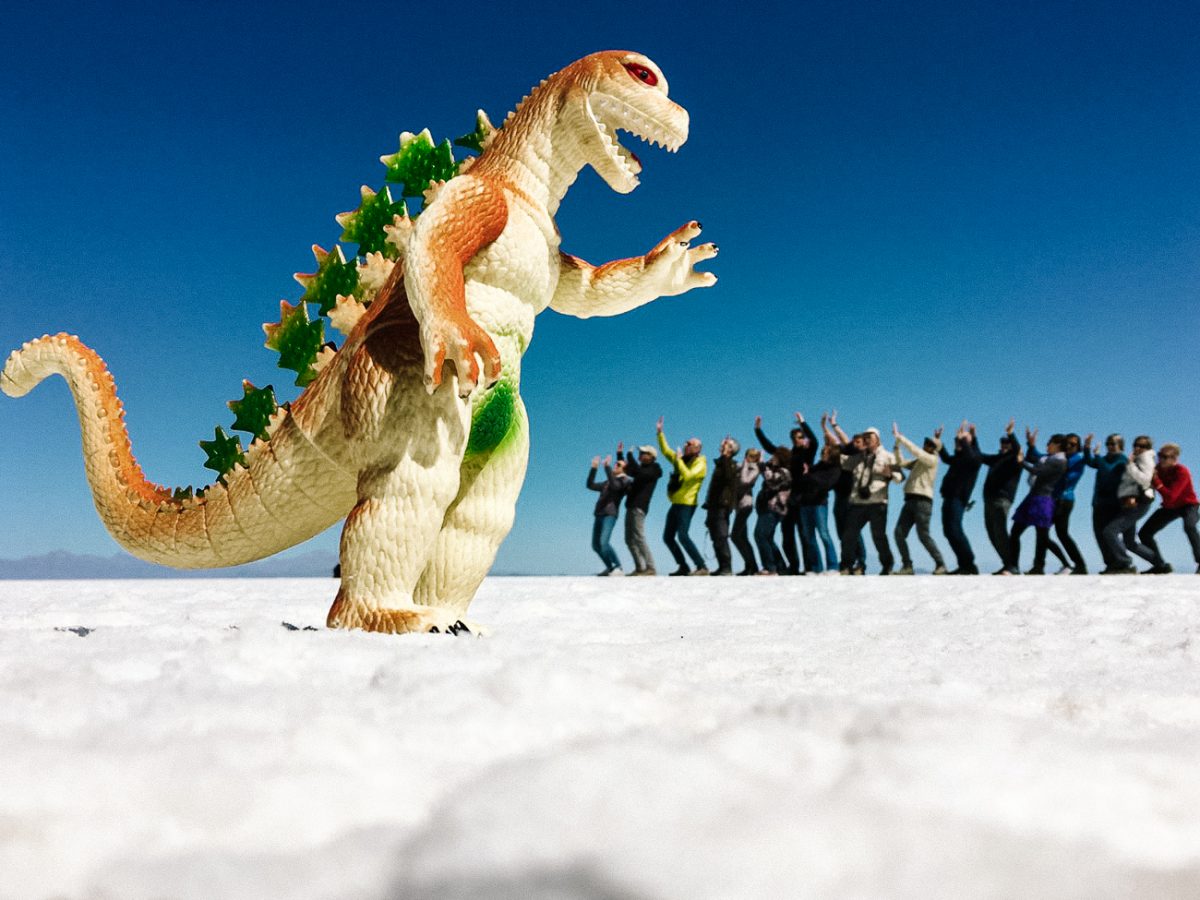
During a tour, you drive for hours across the immense salt flats and enjoy the breathtaking views. Along the way, you get out to take beautiful photos. And if you want to be creative, don’t forget to play around with different perspectives and create funny pictures. Below you will find a number of places that you can visit during a Bolivia salt flats day tour.
Do you also want to take a tour of the salt flats in Bolivia? You can check prices and availability for day trips and multi-day tours.
During the dry season you can visit the islands of Isla Incahuasi and Isla Pescado on El Salar de Uyuni Bolivia. These are rocky peaks that suddenly rise out of nowhere above the salt flats of Bolivia. Isla Incahuasi means place of the Incas, since the Incas are said to have used this as a resting place. Isla de Pescado means fish island because, if you look at the map, it looks like the shape of a fish.

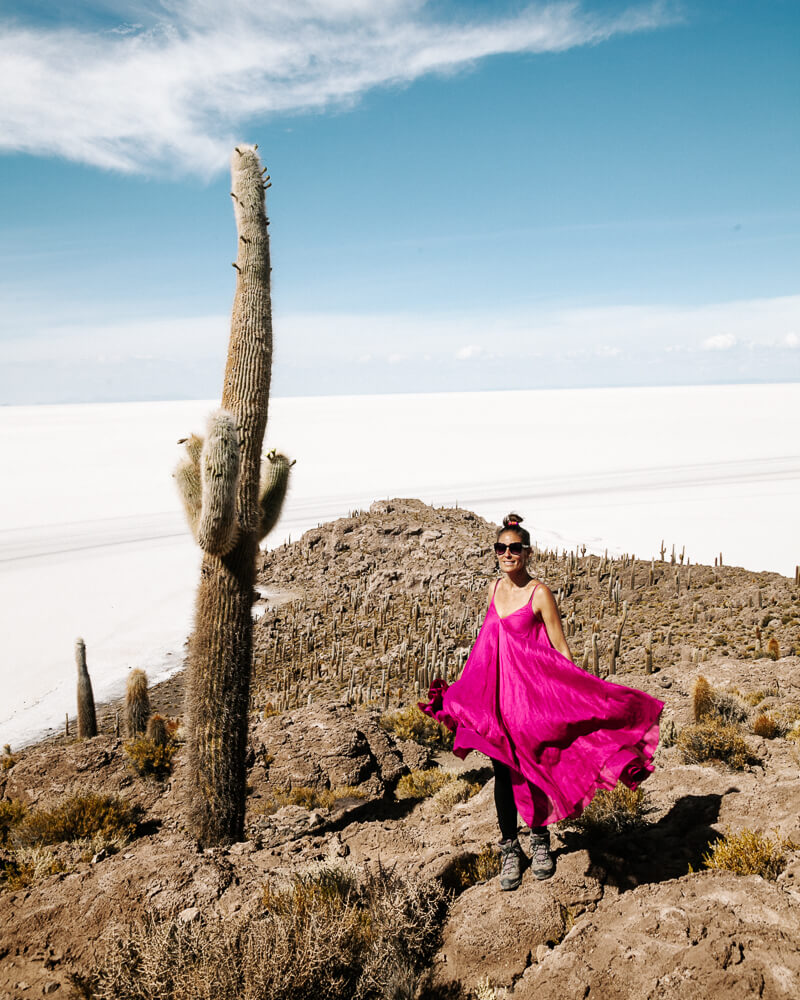
On these islands you will find ancient cacti that are up to twelve meters high. The cacti grow an average of 1 cm per year, so you don’t have to count for long to realize that these cacti are ancient. I personally prefer to visit Isla Incahuasi, because the distances for a day trip are a bit shorter and it has the majority of cacti. The island is a two-hour drive from Uyuni.

On Isla Incahuasi you can go for a nice walk of an hour along the different cacti. On the way you look out over the impressive Salar de Uyuni. Every corner of the island offers another beautiful view and the many cacti make it even more special. Because of the height and slight rise this walk can be strenuous, so take your time. Another option is to stay on the salt flats and walk around the island. Or get to know the local family who lives here very remote and runs a small cafeteria.
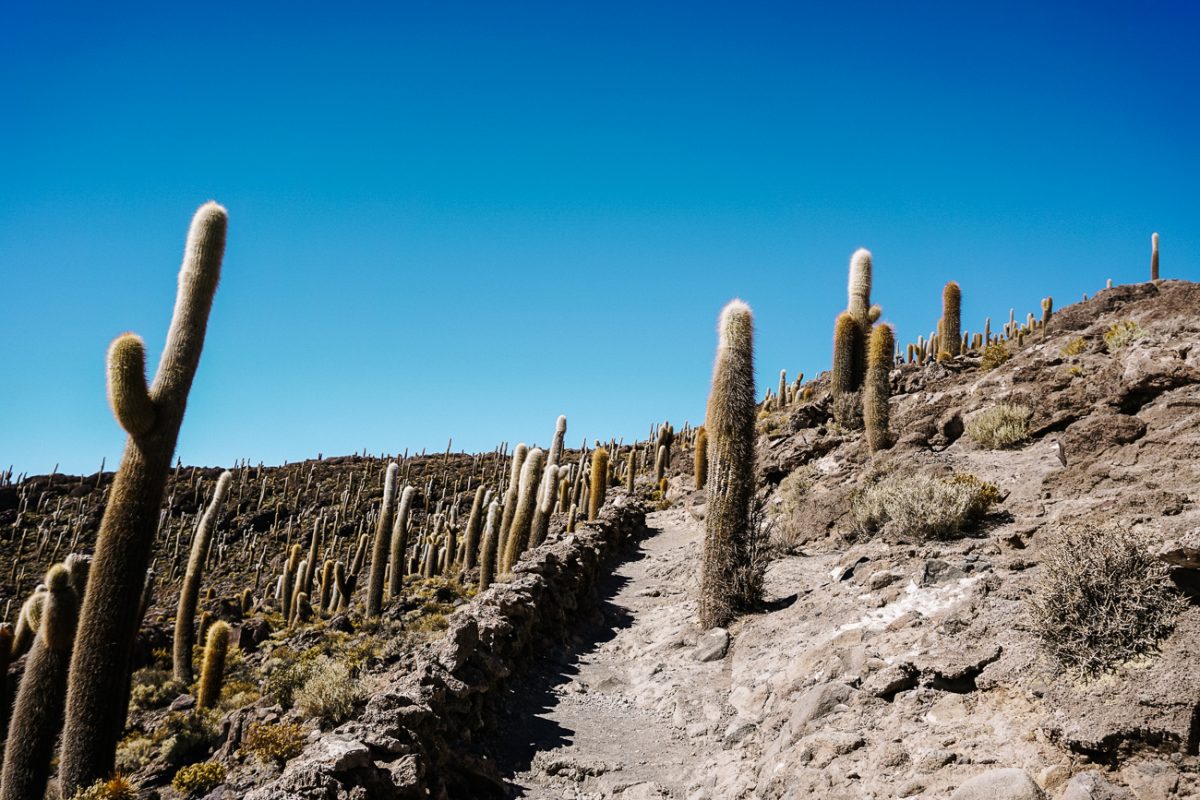
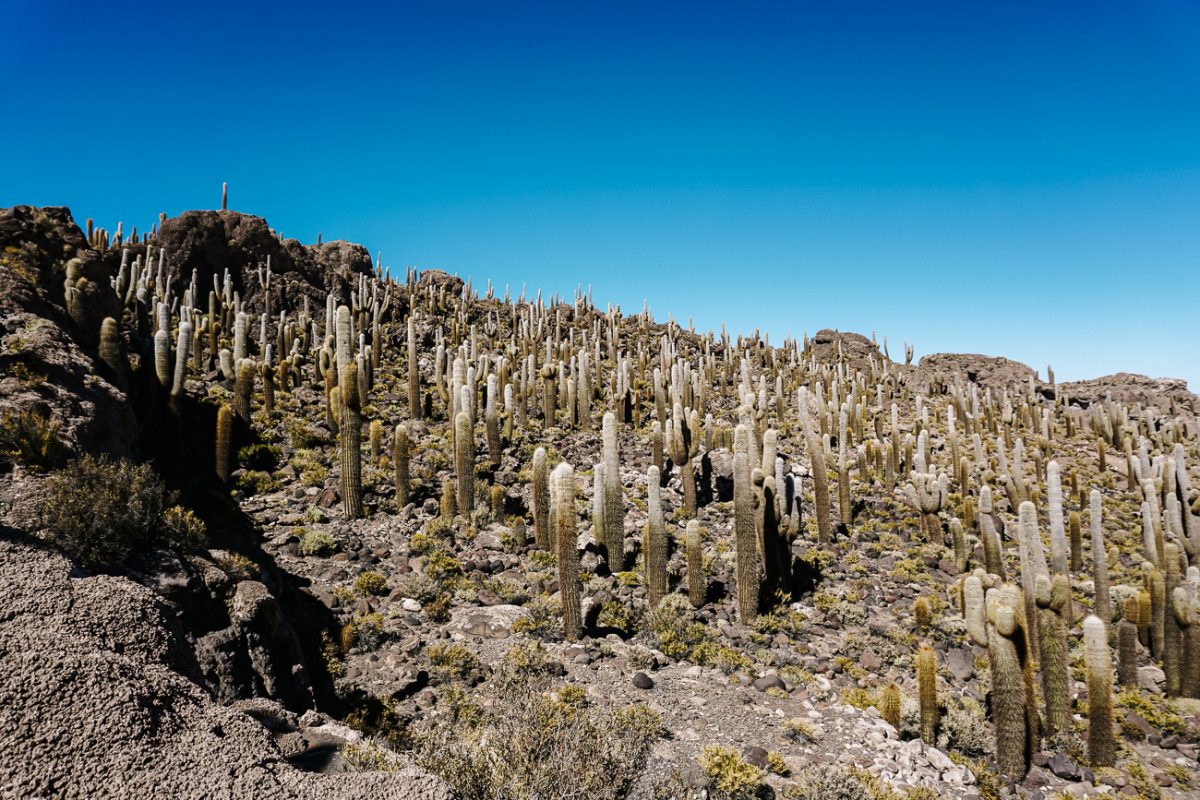
Have you seen the 2017 Star Wars movie The Last Jedi? Salar de Uyuni in Bolivia was used as a location for filming Planet Crait.
At the edge of El Salar de Uyuni you will find the Ojos de Salar, the eyes of the salt flats in Bolivia. Here the salt crust of the salt flat is at its thinnest and you see the water of the underground rivers that flow under El Salar de Uyuni, bubbling. Something that is accompanied by a strong sulphur smell. The water has a certain concentration that the locals consider to be medicinal. During a tour of the salt flats of Bolivia you usually make a short photo stop here.
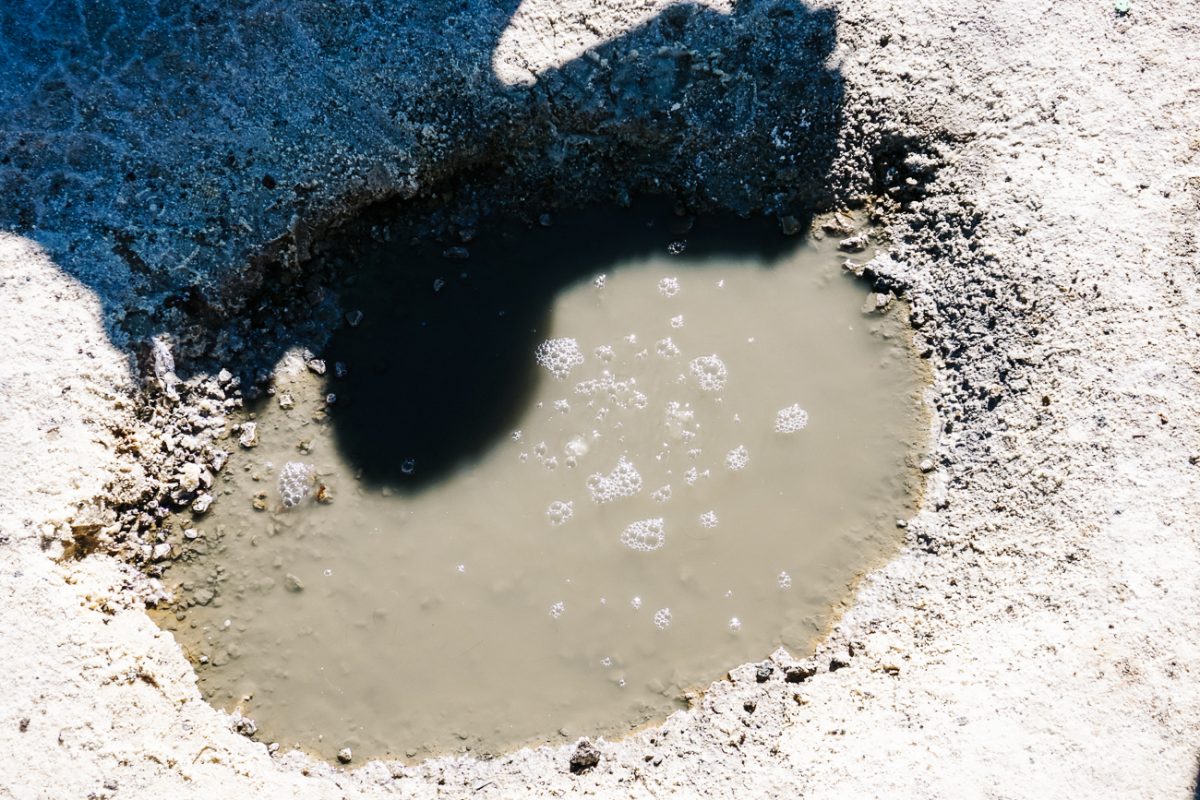
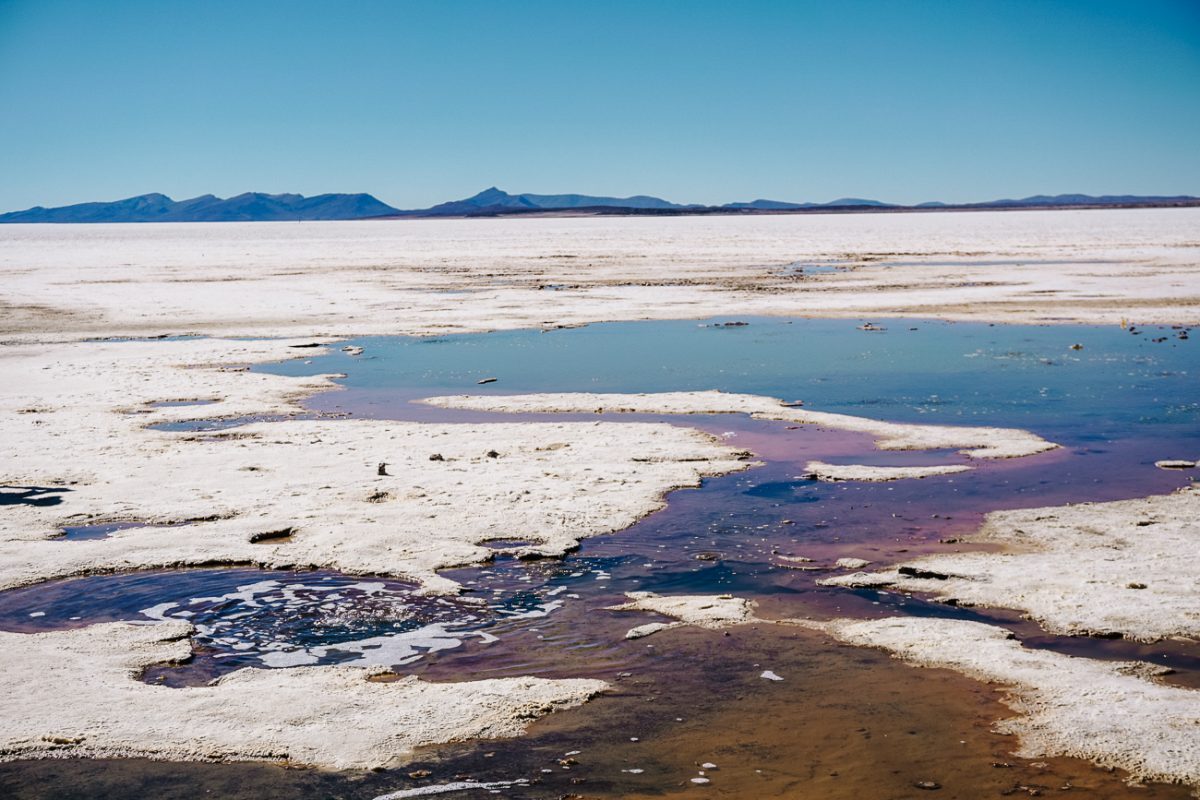
Playa Blanca is the first salt hotel that was ever built on El Salar de Uyuni. It is located in the middle of the salt flats and now a popular place for tours to make a stop, have lunch and take a photo. It is no longer in use as a hotel, but you can still get a nice impression of what it used to be like. There is also a monument of the Dakar Rally and there are often some stalls selling ponchos and other gadgets you can use for the your pictures on the salt flats.
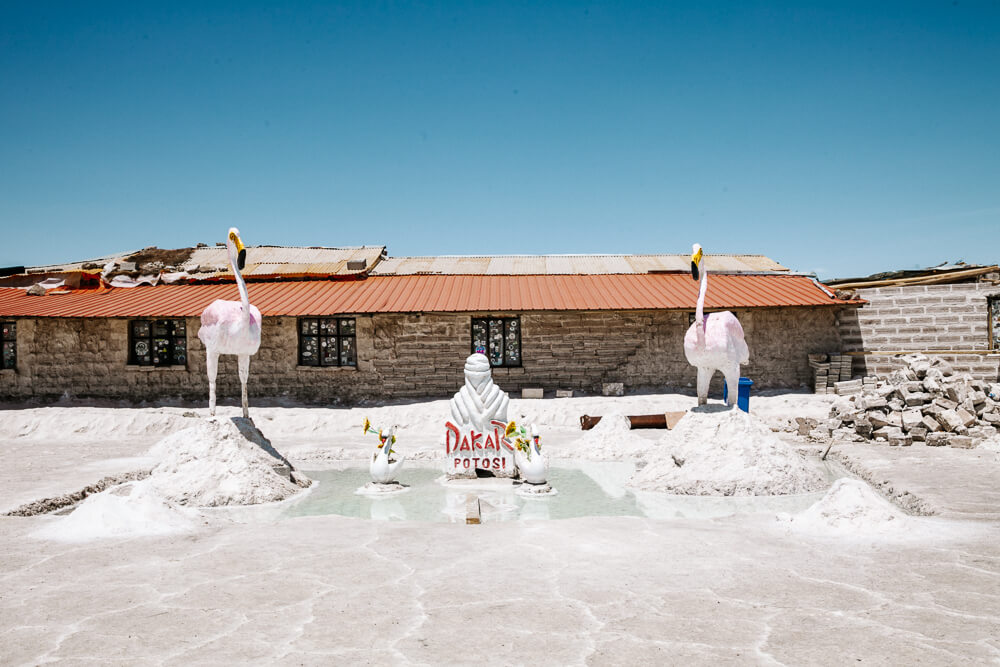
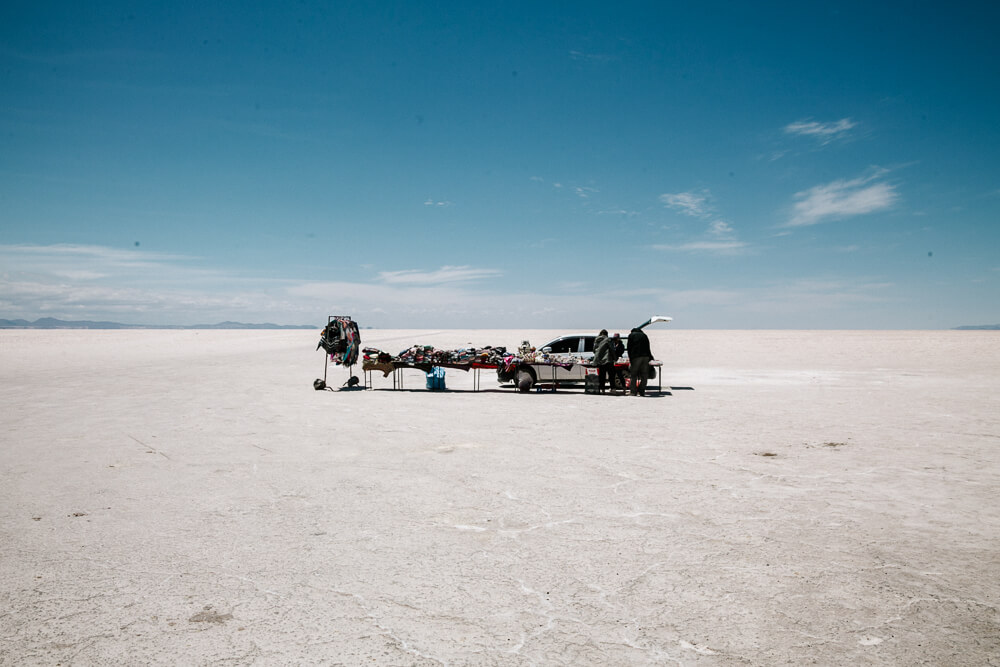
From 2014, Salar de Uyuni Bolivia was the stage of the Dakar Rally for a few years. The stage that races through Uyuni is one of the most beautiful areas and also one of the most demanding for the drivers because of the altitude.
There are several villages around the Salar de Uyuni, living from the salt production, such as the village of Colchani. The Salar de Uyuni in Bolivia contains an estimated 10 billion tonnes of salt, with an impressive 25,000 tonnes of it excavated and processed at Colchani annually. This tiny village of just 600 people is home to Bolivia’s largest salt-processing cooperative and i often visited during a Uyuni Bolivia salt flats day tour. Almost all of the 25 families, living in this town, have a small traditional salt factory and are happy to show you the process.
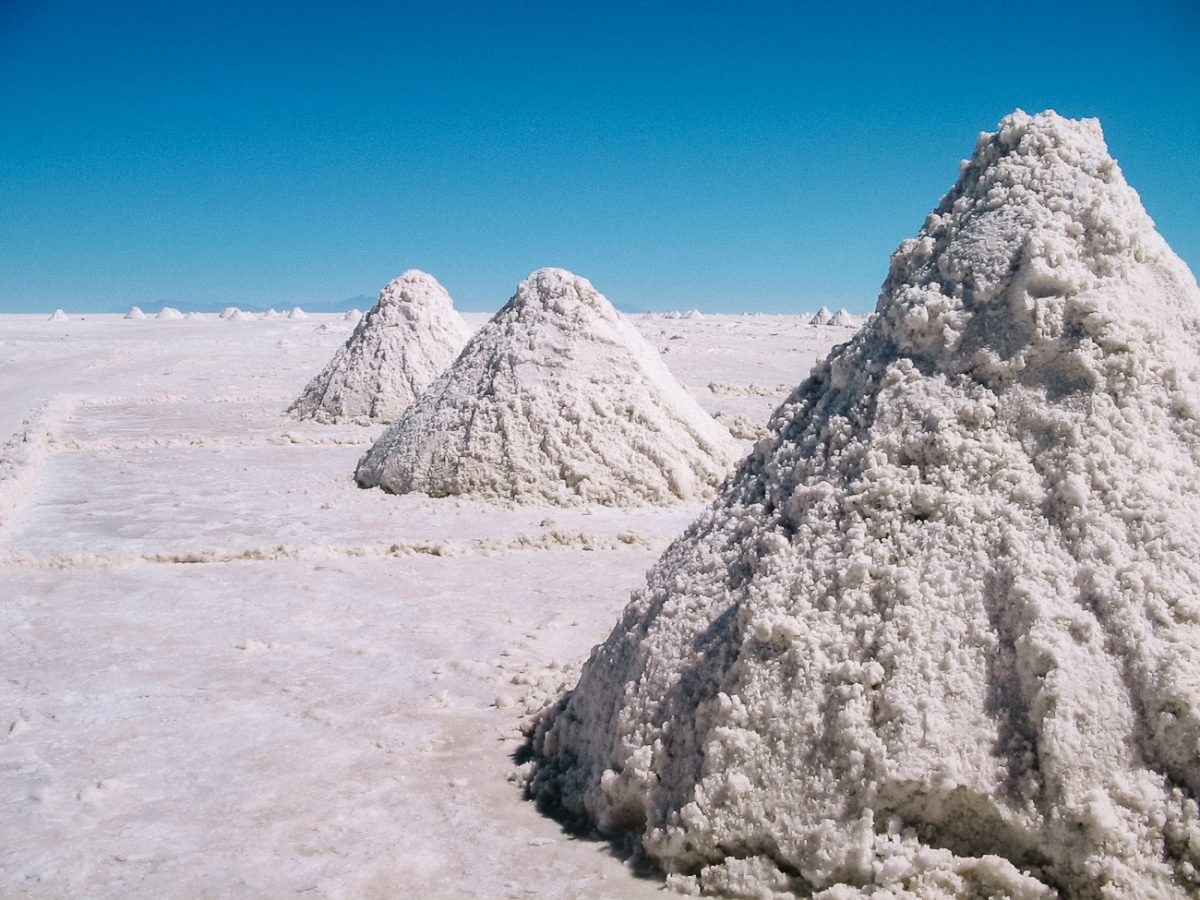
The salt is collected from the Bolivia salt flats by truck. It is then placed on large piles to dry, after which it goes into the oven to dry further. Above the oven, the salt is manually turned over. It is then ground into a rough form and as a final step, iodine is added, a mandatory procedure in Bolivia. Most of the salt is used for the domestic market, but in some cases it also goes to Chile and Peru. During the rainy season, production stops completely. The salt is then too wet to dry in the ovens. Tip: You can find nice souvenirs here, made entirely of salt, a very authentic Bolivian souvenir to bring home.
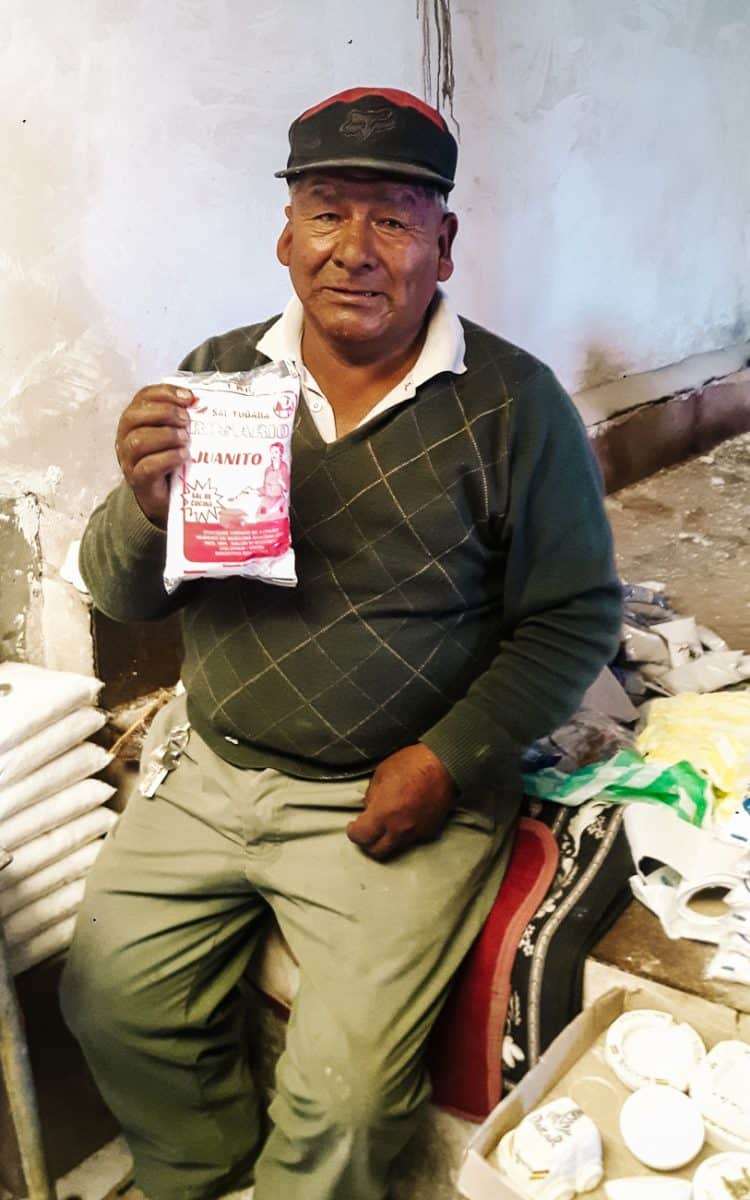
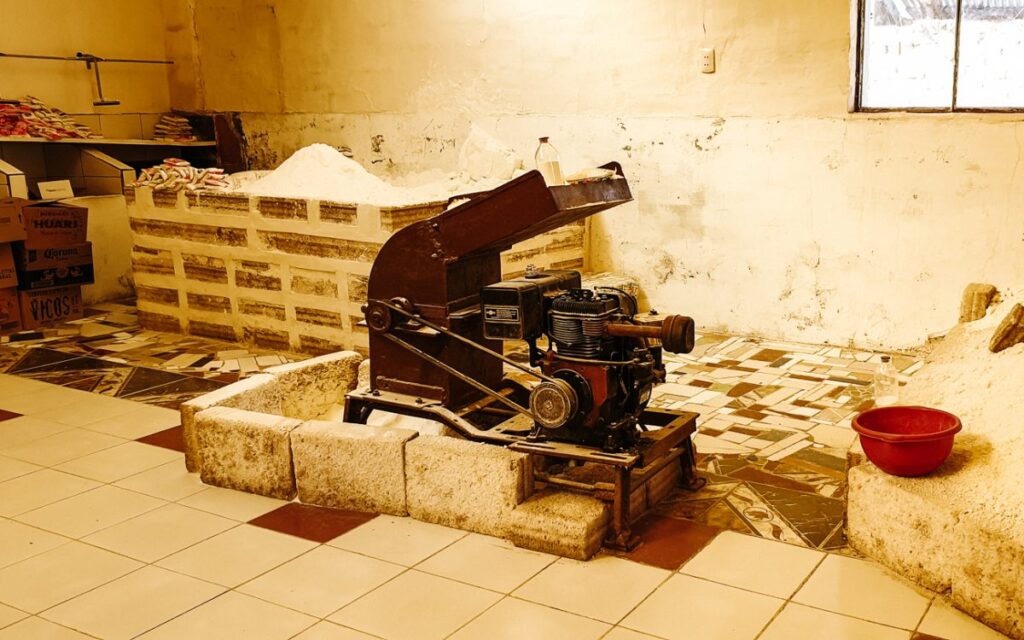
El Salar de Uyuni in Bolivia has a large supply of lithium. Lithium is used in medicine for mental illnesses and for the manufacture of batteries. For years, Chile was the number 1 exporter of lithium, but Bolivia has now also become an important player. Bolivia is estimated to have 50% to 70% of global lithium supplies, according to 2019 calculations.
Bolivia is a country of countless myths and legends. I had often heard about the other origin of El Salar de Uyuni in Bolivia. But the story made the biggest impression when two little girls who live on Incahuasi explained it to me in detail, with drawings.
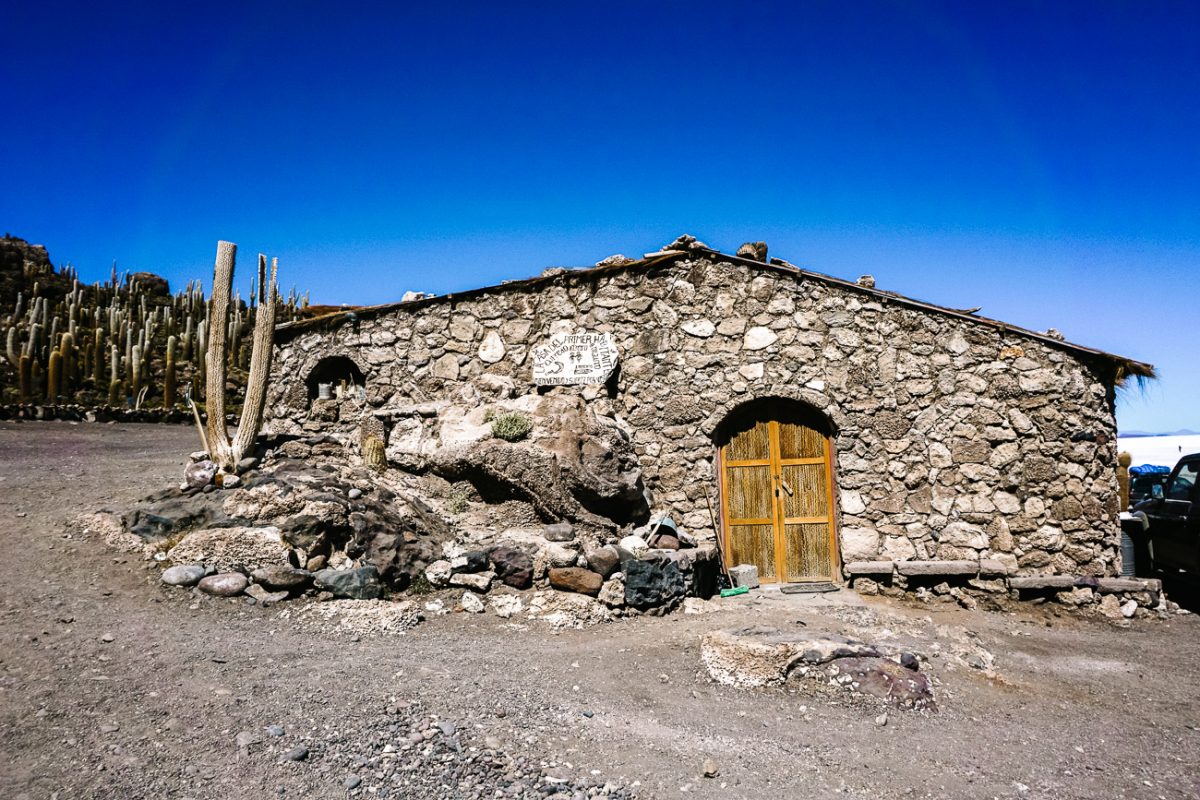
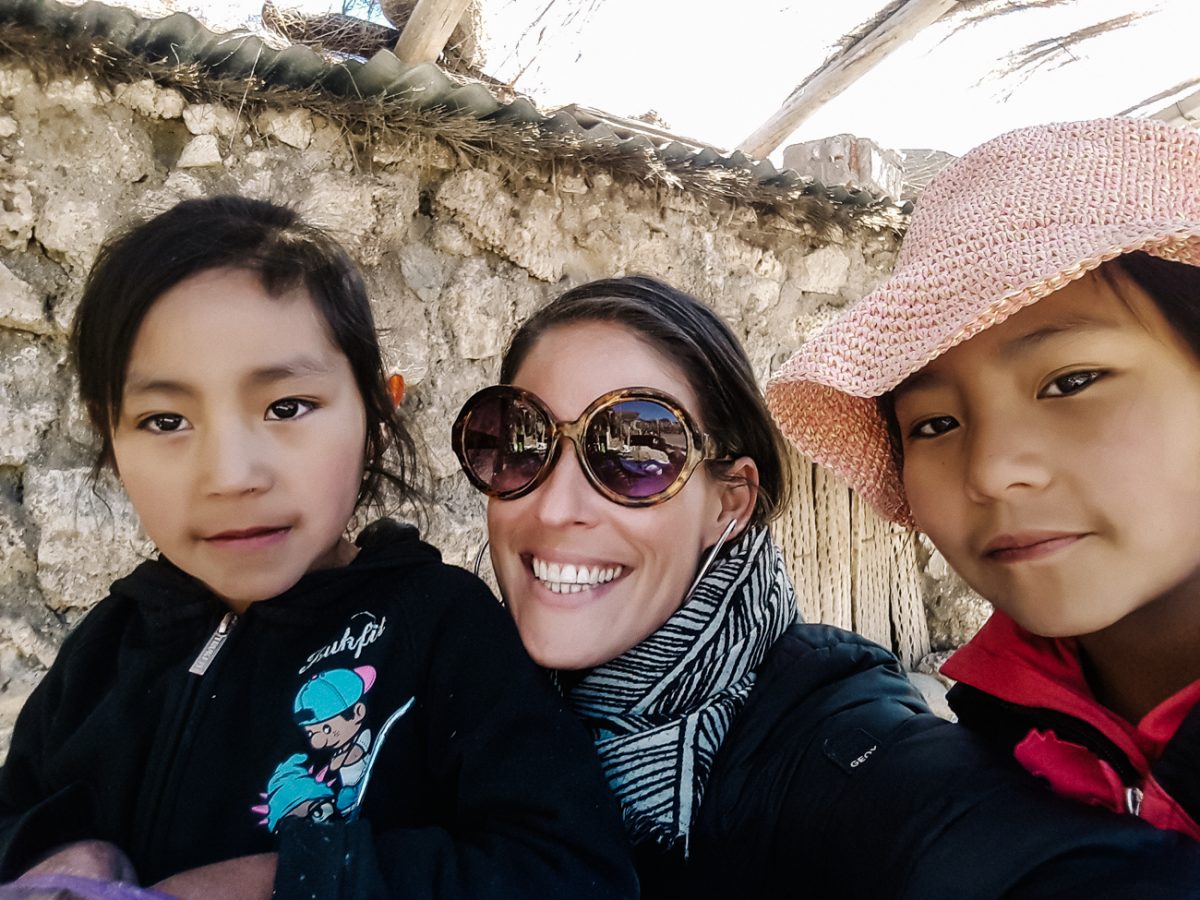
According to a legend, the surrounding volcanoes Tunupa, Kusku and Kusina are said to be big people. Tunupa married Kusku, but Kusku ran off with Kusina. Tunupa is said to have burst into tears while breastfeeding her son. Her tears in combination with breast milk are said to have formed the salt flats of Bolivia. For some local people it is therefore Salar de Tunupa instead of El Salar de Uyuni. I think it is a beautiful story.
Ever wondered how it would be to stay in a hotel made of salt? These are hotels where the walls and much of the interior are made of pressed salt blocks. Salar de Uyuni is the only place in the world where you can do this and you don’t want to miss it. Hotel Luna Salada is located on the edge of the salt flats in Bolivia and is not only one of the most luxurious hotels in the region, it is also the perfect base for exploring the Salar de Uyuni in Bolivia.
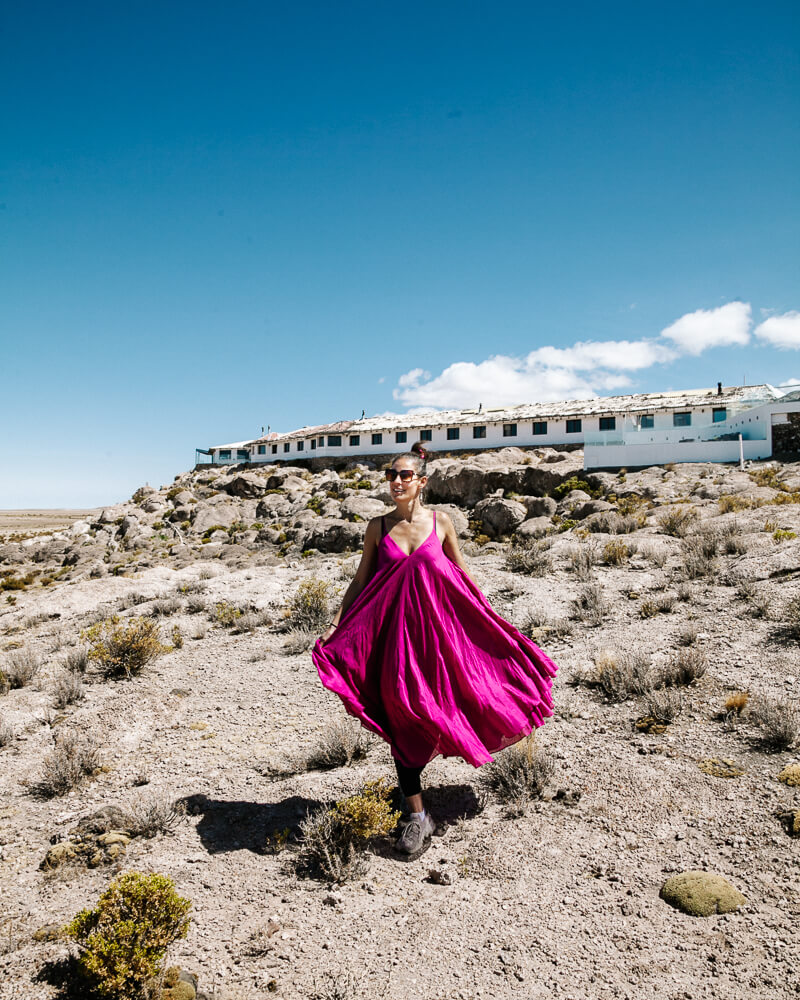
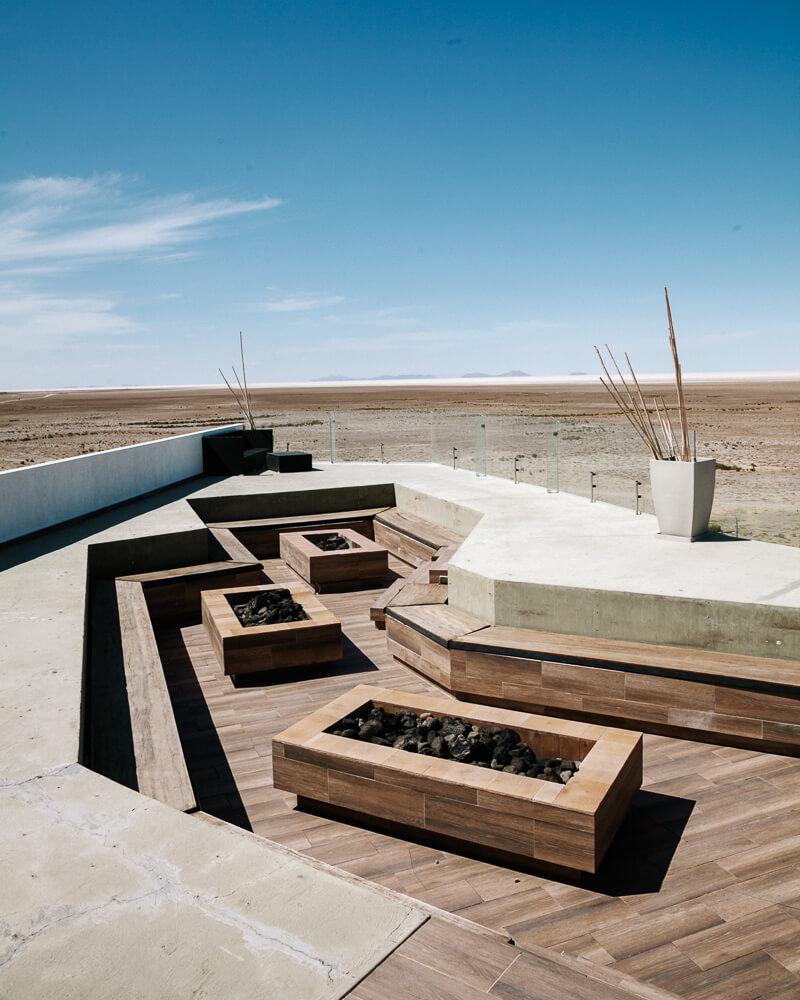
As soon as you enter Luna Salada, you will be amazed. At the reception you will walk through grains of salt, the walls and sculptures are made of salt and beautiful decorations are everywhere. The rooms are comfortable, stylish and fully equipped. You can also dine in the panorama restaurant, relax in the spa and enjoy the most beautiful sunsets over the salt plains of Bolivia. Curious? In the next article I will tell you more about salt hotel Luna Salada in Uyuni Bolivia.
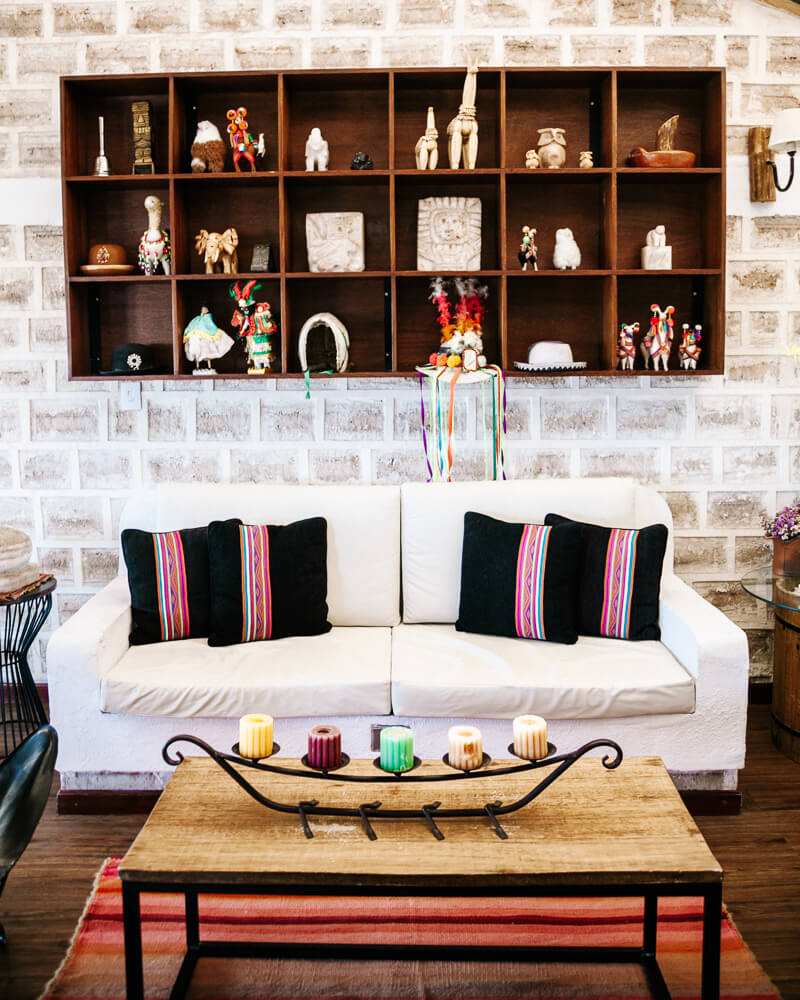
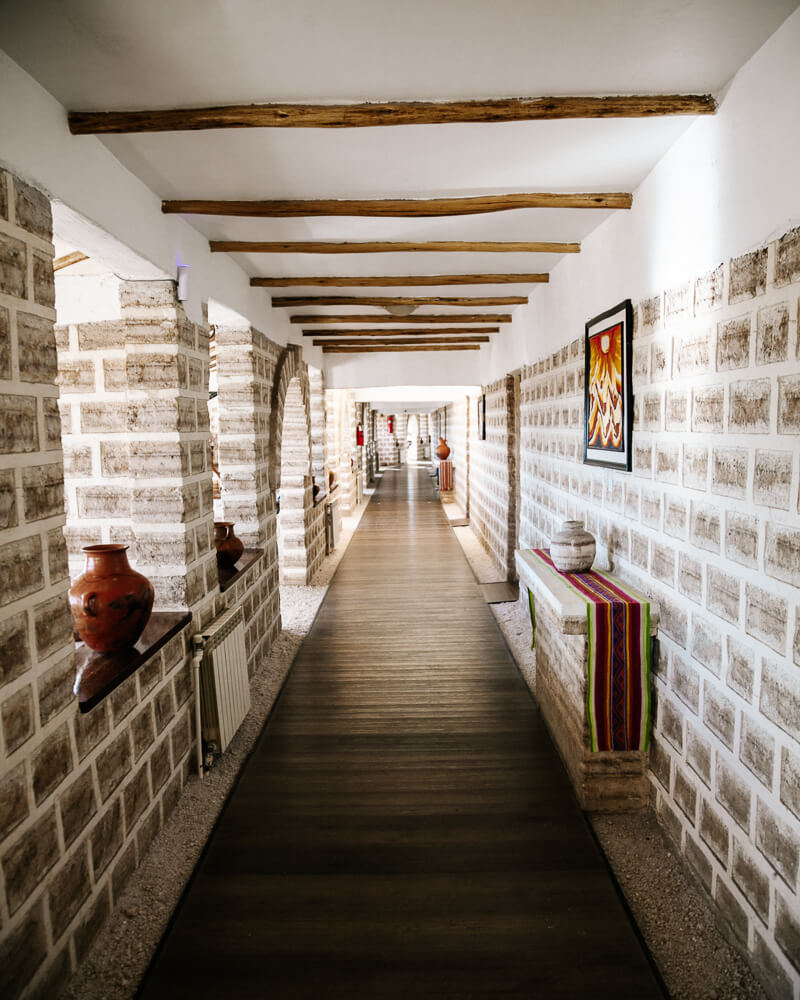
Do you also want to spend the night in salt hotel Luna Salada Uyuni Bolivia? You can find the latest prices and availability here.
The small dusty town of Uyuni is the gateway to the spectacular Salar de Uyuni in Bolivia. Here you will find several accommodation options, restaurants and tour operators offering daily tours. If you travel over land, you can see Uyuni and the salt flats already from a distance, wich is very beautiful
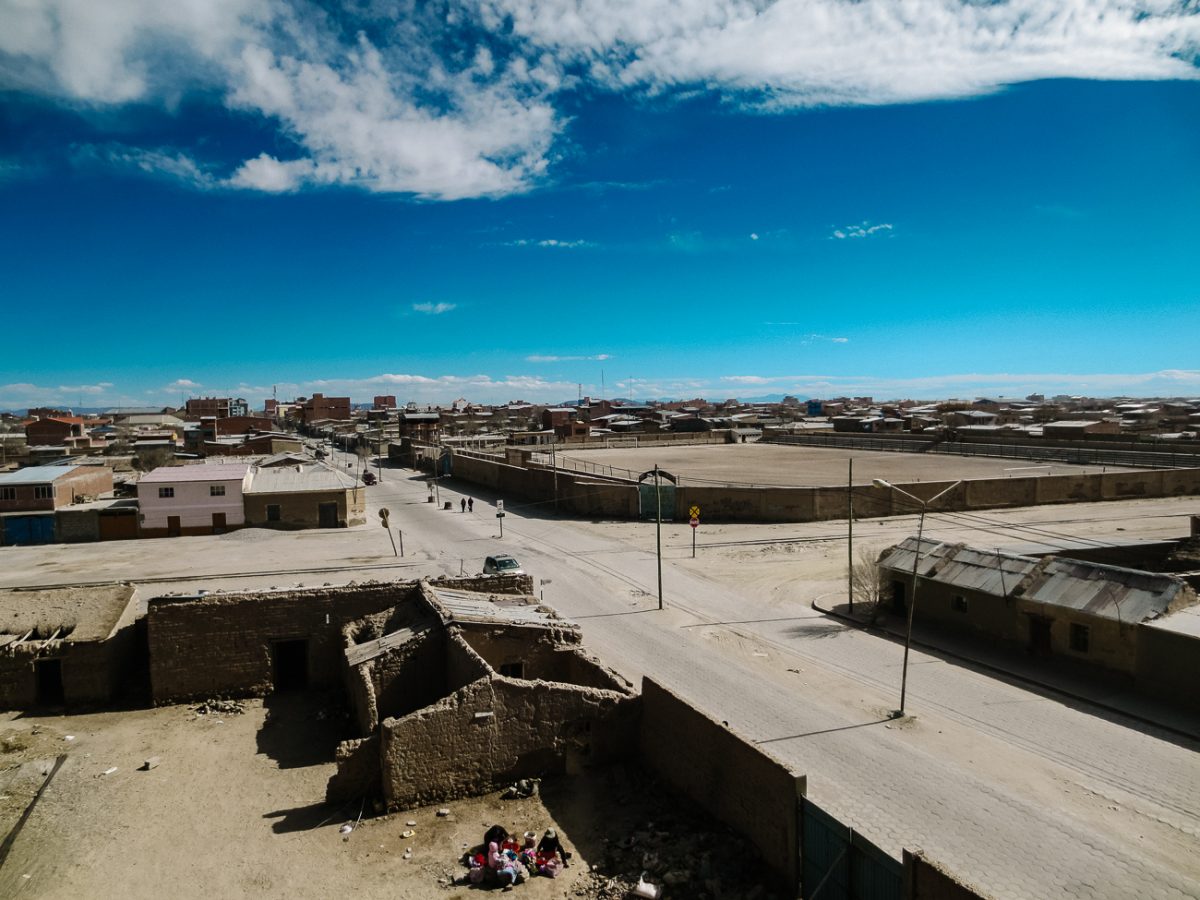
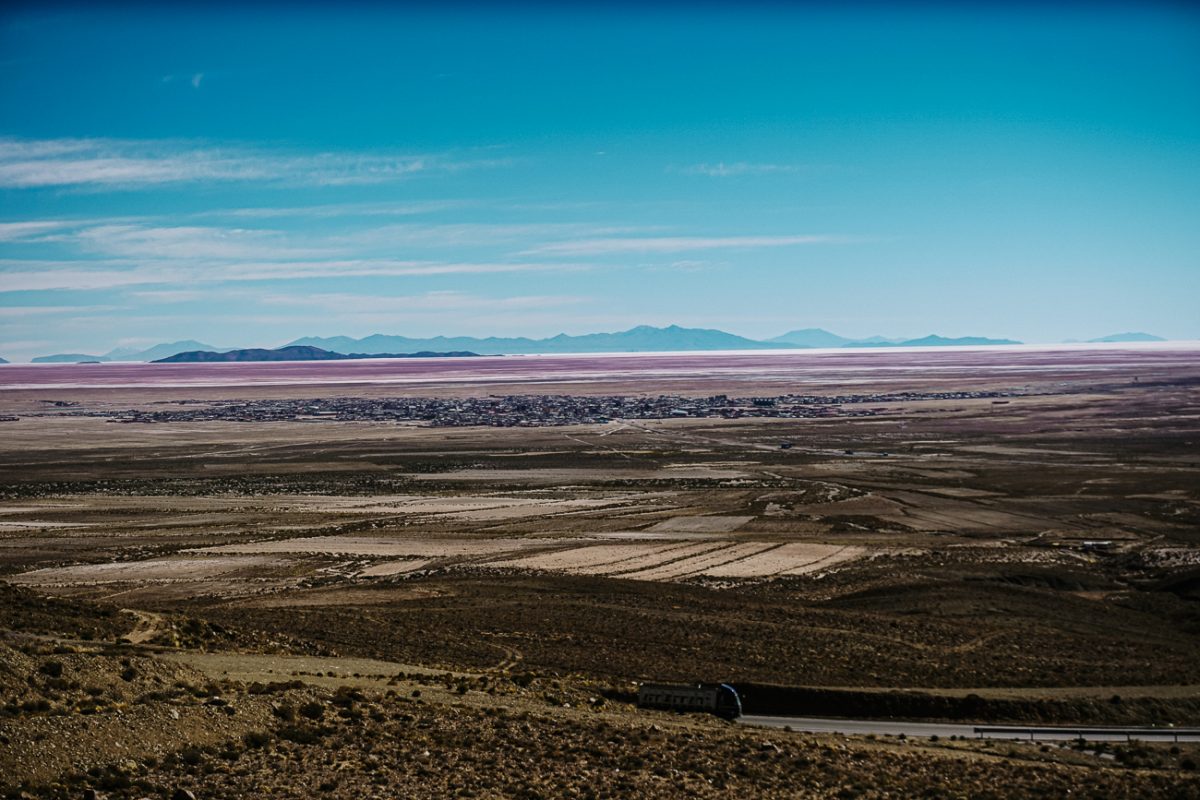
Uyuni lives from mining, salt production and of course tourism, something that is visible in the many jeeps driving back and forth in the streets. There is also a large military base. Other than that, there is not much to do in Uyuni town itself, although the atmosphere here is special, because it is so remote. These are my tips for Uyuni town in Bolivia.
The center of Uyuni consists of a main street, a square with a mini tower, also called the mini Big Ben, a few cluttered shops and restaurants, which mainly serve pizza. One of the best things to do in Uyuni towns is to visit the local market, consisting of a few streets with stalls and people who come together for a bite to eat and a drink. It is a nice place to observe local life and buy some warm clothes. if you haven’t brought them. The temperatures in Uyuni can drop well below freezing in the winter (July and August).
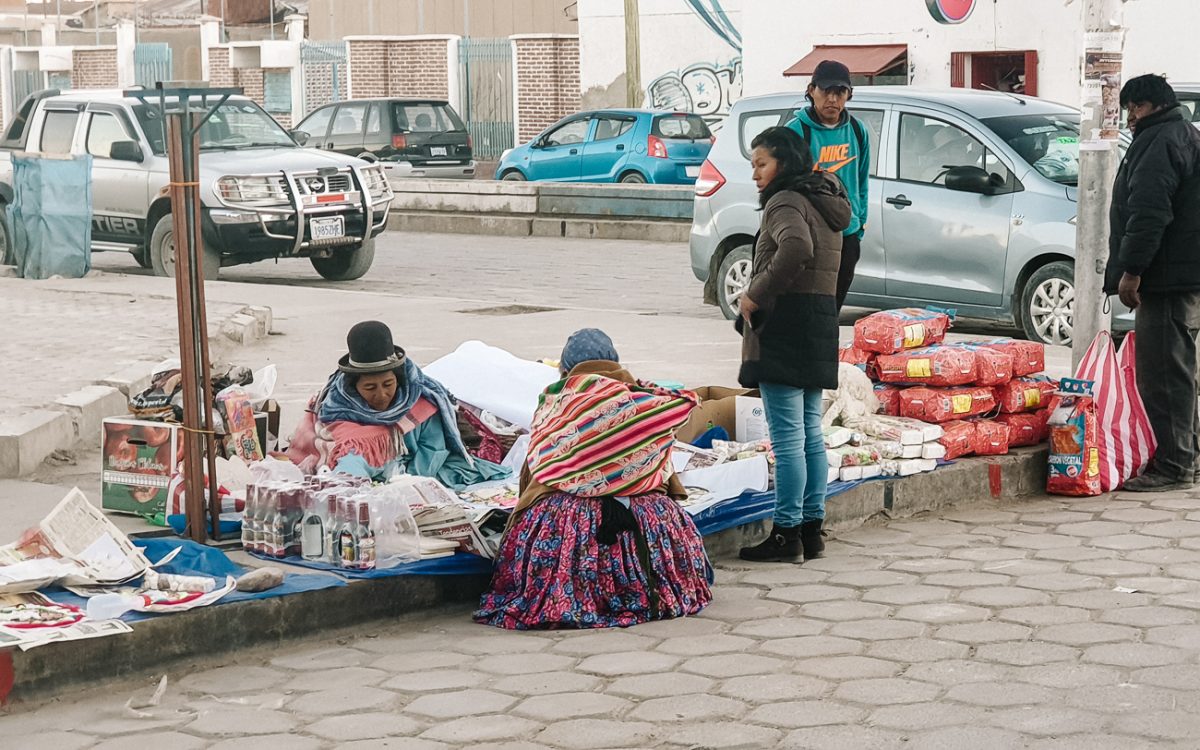
A few kilometers outside the village you will find the Cementerio de Trenes, the Uyuni steam locomotive graveyard, or at least that is what it is called. Uyuni used to be an important town for the transport of goods and minerals, because of the surrounding mines. When the mining industry declined in the 1940s, the trains were written off and dumped here. It is a surreal setting and therefore a favorite place for photographers to take beautiful pictures.
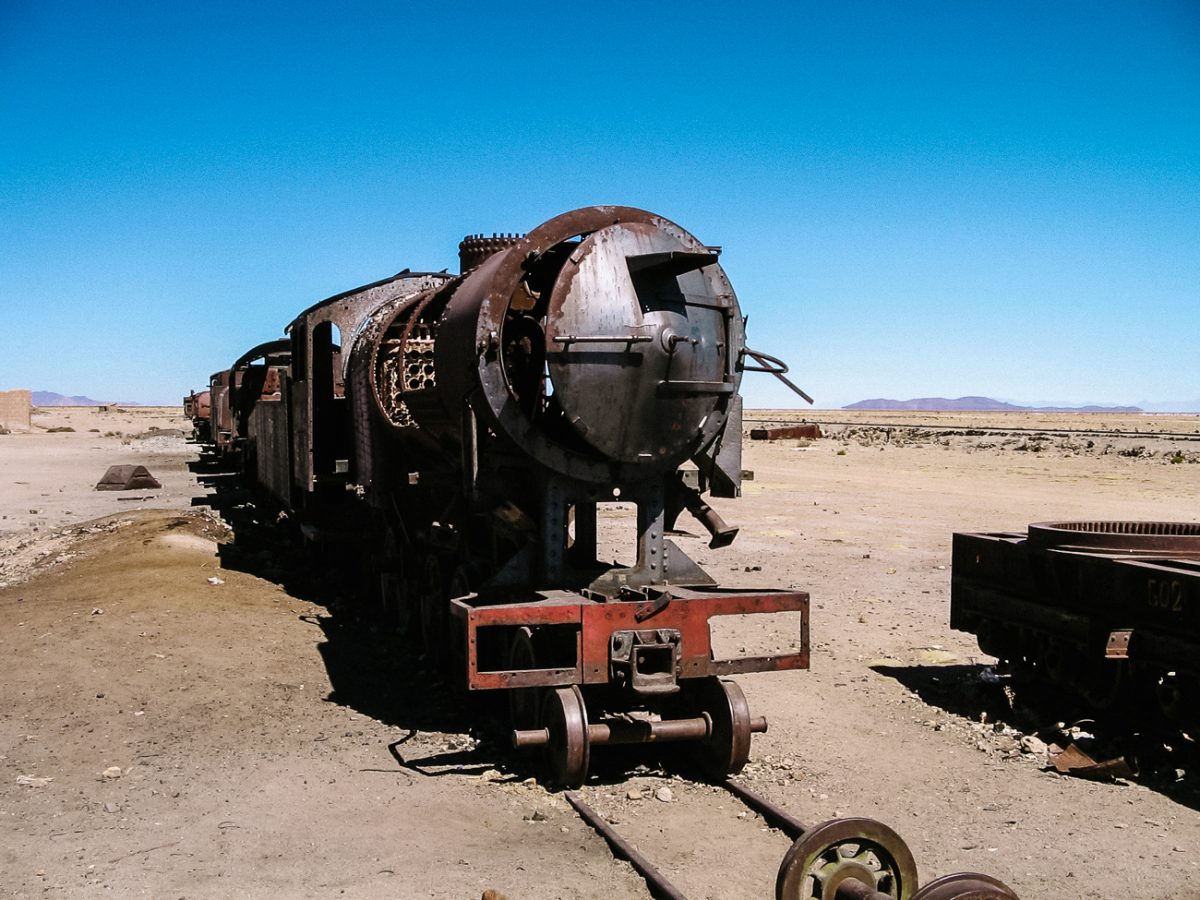
Uyuni tips: Most day tours include a visit to the cemetery. However, it is also interesting to visit this place on your own. At the end of the afternoon, when the light is at its best, you can take great shots. The train cemetery is a ten-minute drive from the center of Uyuni. Take a taxi, because you don’t want to walk the dusty road to the train cemetery.
In Uyuni, the majority of restaurants offer pizzas. On the square around the mini Big Ben, you will find numerous restaurants of these type and easy to find. Here are my tips for restaurants in Uyuni that serve more than only pizza.
Uyuni city has numerous hotels but most small and basic. My recommendation is not to save money on a nice hotel in Uyuni Bolivia, especially if you plan a multi day tour on the Bolivia salt flats, where accommodations are very basic and often cold. These are my tips for hotels in Uyuni city.
It is important to travel with a reliable and professional organization on Salar de Uyuni in Bolivia. Do not save money here, your safety in this area is the most important thing. In the high season, which runs from June to September, it is recommended to book a tour prior to your visit. This is an overview of tours in Uyuni, including reviews.
The salt flats of Bolivia can be visited between April and October. During the rainy season between November and March, the flats are flooded and are often inaccessible. You can also not visit the islands with the cacti. However, it is still possible to take fantastic photos. Please note: In April, you may still sink through the salt crust in some places, as the water has not yet completely dried up.
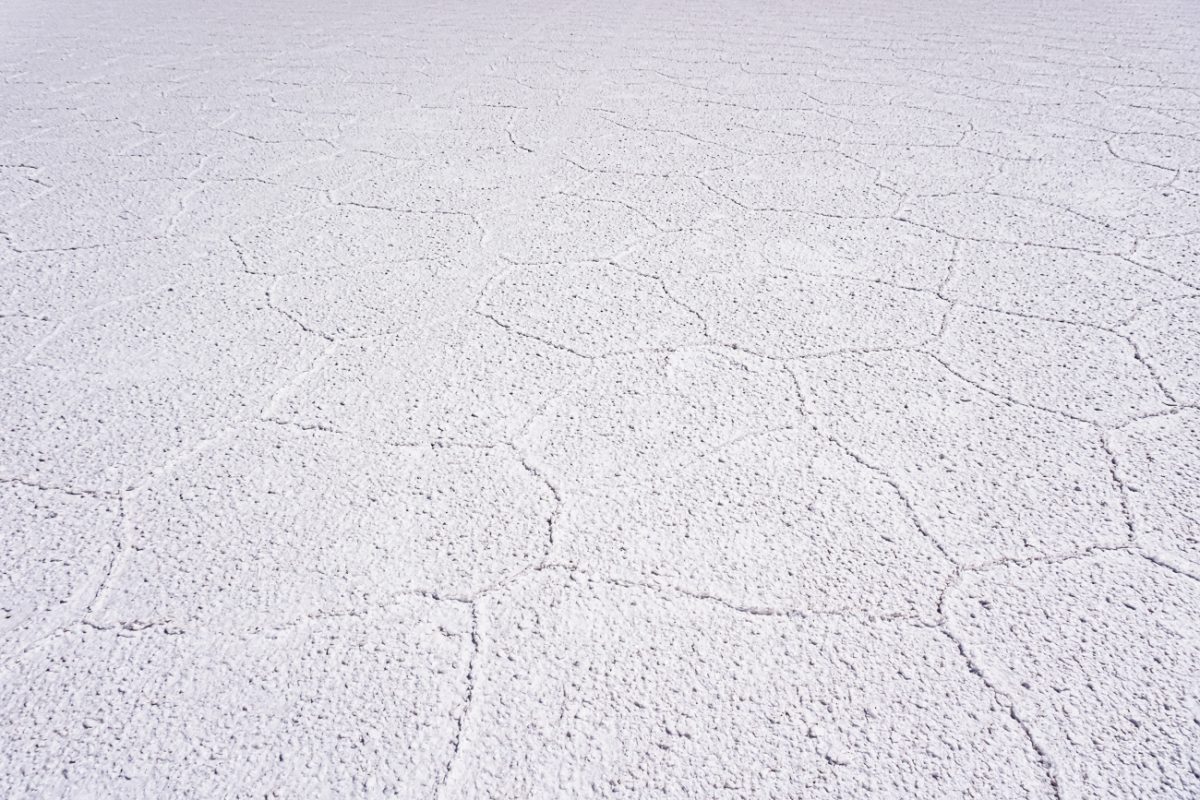
In the dry season, a bright sun shines in Uyuni during the day, but it can cool down considerably in the evening. It is therefore important to prepare well. This is my packing list with recommendations for your visit to El Salar de Uyuni in Bolivia.
Uyuni tips: It is recommended to take a shower in the evening. The pipes are often still frozen in the morning. Also bring a small hot water bottle with you in your bed. Hotels are not always warm.
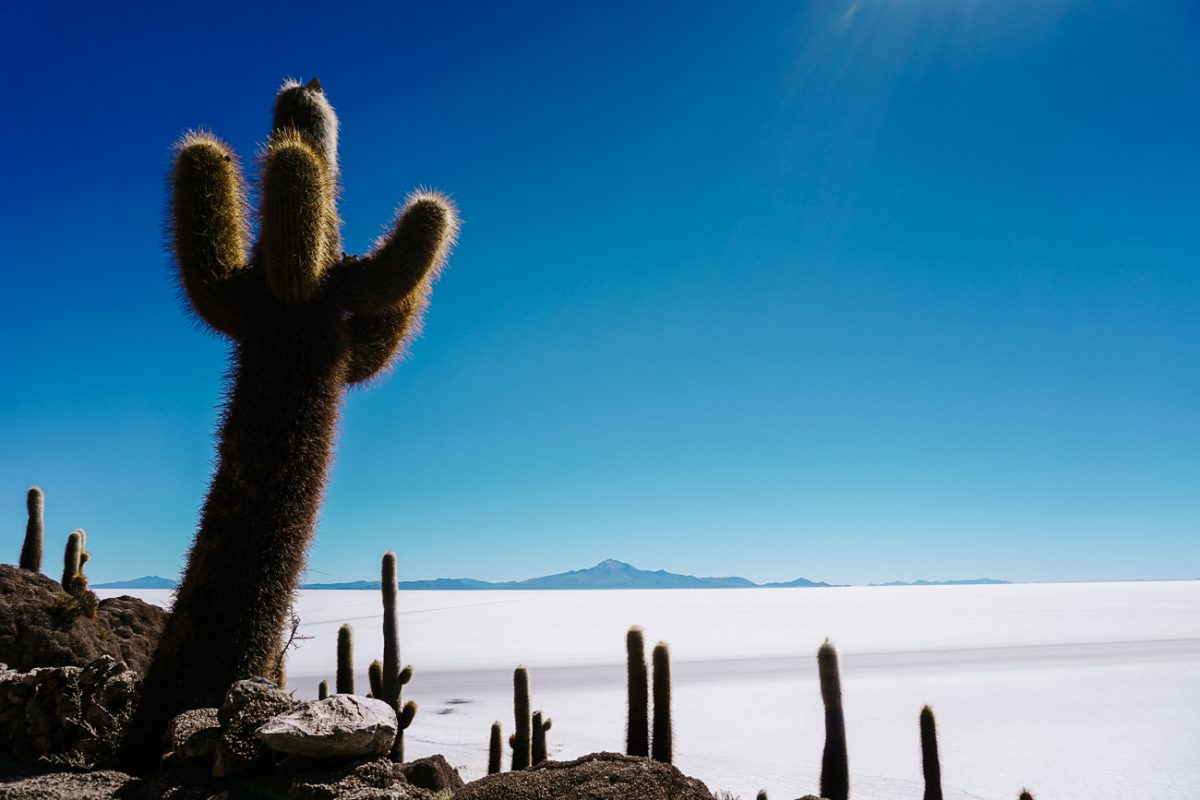
El Salar de Uyuni can be reached by plane or bus from several Bolivian cities. There is a small airport with daily connections to La Paz and Santa Cruz de La Sierra, with Boliviana de Aviacion and Amaszonas airlines. Looking for suitable flights? You can use Skyscanner to search, compare and book your flight. The salt flats can also be reached by land from La Paz, Tupiza and Potosi in Bolivia. Looking for public transport and shuttle services in Bolivia? Search and book your trip with Bookaway.
There are several buses that can take you from Potosí to Uyuni and vice versa. Depending on the bus company you choose, this is a journey of about 4 hours and one of the most beautiful routes across the Bolivian highlands. You can also decide to book private transportation, so that you have the freedom to get out and take pictures along the way. Of course, you will need to pay more for this service.
From La Paz there are several ways to reach Uyuni. There are night buses, with seats that can be reclined including a toilet on board. The buses are cheap and doable, but the distances are long, between 8 and 10 hours. It is easy to buy a bus ticket with transportation to the bus station included. You will then be picked up at your hotel and taken to your new hotel upon arrival. The best way to search and book your trip is via Bookaway or here. Another option is to fly from Uyuni to La Paz or other Bolivian cities. Skyscanner is a useful tool for searching and booking your flight.
There are several buses that take you from Tupiza to Uyuni and vice versa. It will take you more or less 4 hours.
If you choose a multi-day trip, you will also visit the beautiful lagoons with their countless flamingos and geysers. With this tour you will have the option to finish your tour in San Pedro de Atacama, Chile. A super nice village in the Atacama desert, which is the gateway for visiting a number of other natural wonders such as the moon valley, the Atacama desert, geysers and the Chilean salt flats and lakes. Read soon more about a multi-day trip across the salt flats with San Pedro de Atacama as final destination.
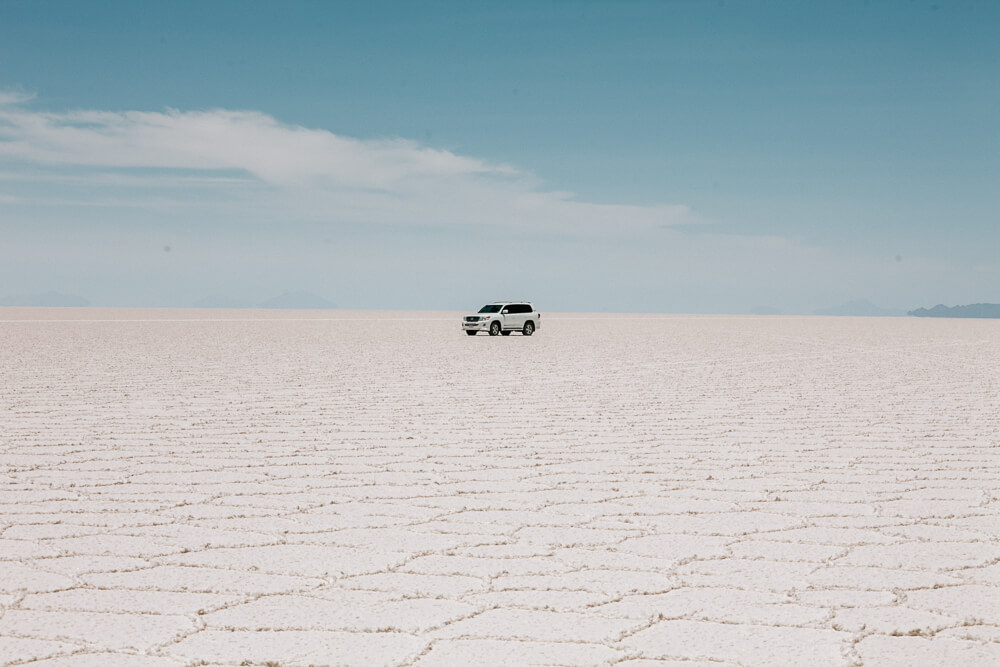
Did you enjoy reading this article with tips for visiting the Salar de Uyuni, the salt flats of Bolivia? Let me take you on a journey along the most beautiful destinations and places to visit in Bolivia. In the next articles you will find my Bolivia travel guides with lots of inspiration and tips.
This article may contain affiliate links. If you purchase something using one of our links, we may receive a commission at no extra cost to you, which helps us keep this blog alive. Thank you for your support! Please see our disclosures for more information.